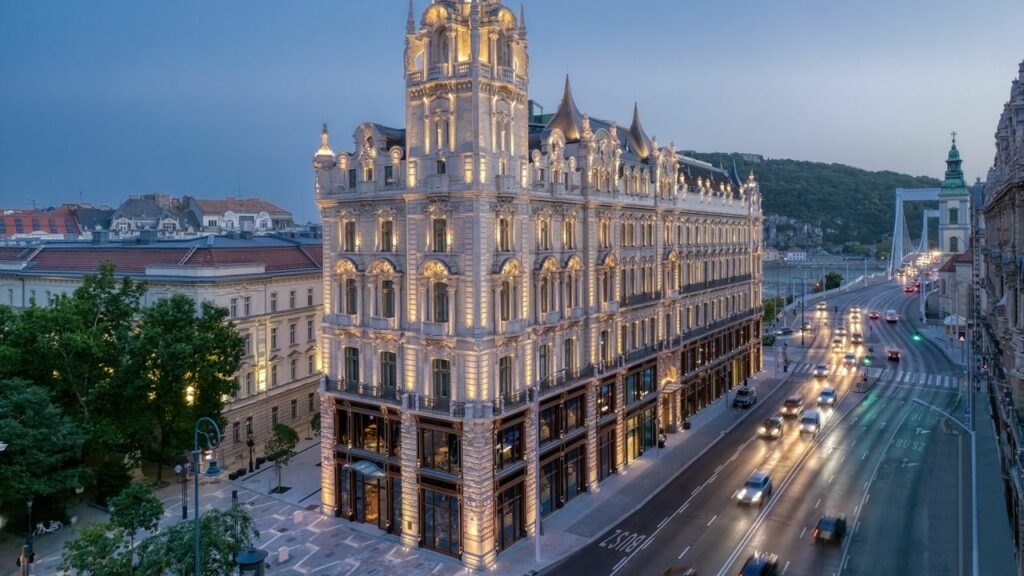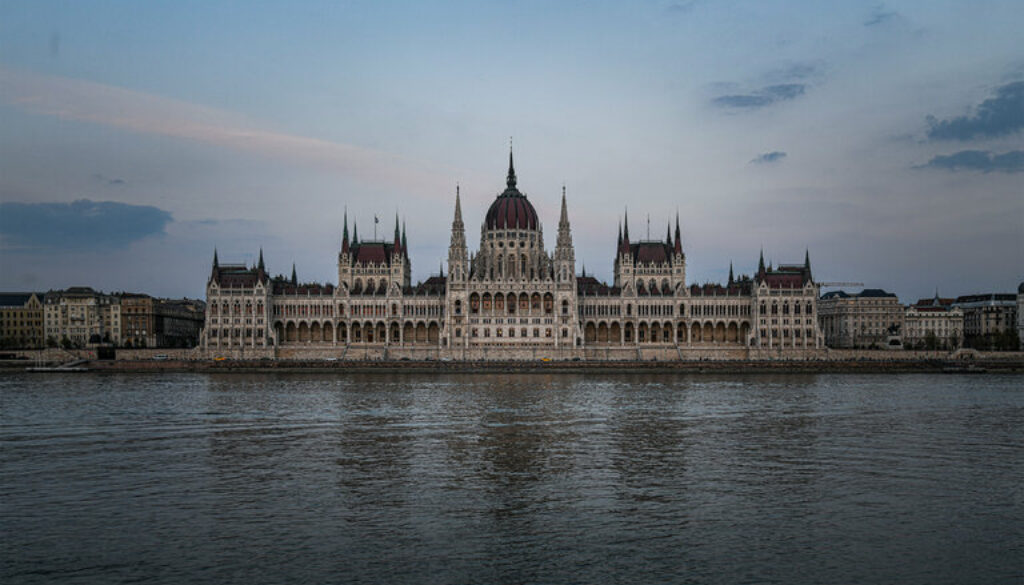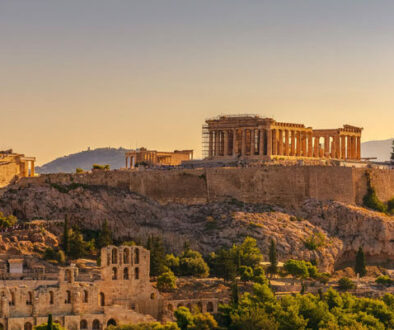Budapest Unwrapped: Tracing Hungary’s Cultural Footprints
Budapest, the capital city of Hungary, is a treasure trove of culture and history, seamlessly blending the old with the new. This vibrant city has witnessed the rise and fall of empires, and its architectural marvels, rich cultural heritage, and thriving creative industries attract visitors from all over the world. In this article, we will take a deep dive into Budapest’s cultural footprints and explore its diverse art forms, gastronomy, literature, fashion, entertainment, and more.
Exploring Budapest’s Architectural Marvels
Budapest, the capital city of Hungary, holds immense historical significance due to its strategic location and rich cultural heritage. The city’s history can be traced back to the Roman era when it was a key settlement along the Danube River. Over the centuries, Budapest has witnessed the rise and fall of empires, and its architecture, traditions, and customs bear the marks of these influences.
One of the most prominent periods in Budapest’s history is the Roman Empire when the city was known as Aquincum. The Romans recognized the strategic importance of the location, establishing a military camp and a vibrant trade hub. Today, visitors can explore the remnants of the Roman era at the Aquincum Museum, where ancient artifacts and ruins provide insights into daily life during that time.

Following the fall of the Roman Empire, Budapest became part of the Kingdom of Hungary, which played a crucial role in shaping the city’s cultural identity. The medieval era saw the construction of iconic landmarks such as Buda Castle and Matthias Church, which still stand as testaments to the city’s rich history.
In the 16th century, Budapest fell under Ottoman rule, marking a significant period of cultural exchange and influence. Turkish baths, such as the Király and Rudas Baths, were built during this time and continue to be popular attractions for locals and tourists alike. The Ottoman influence can also be seen in the city’s culinary traditions, with dishes like Turkish coffee and kebabs finding their place in Hungarian cuisine.
The 19th century witnessed a period of revival and prosperity for Budapest, particularly during the Austro-Hungarian Empire. The city underwent a significant transformation, with the construction of stunning neo-Gothic and neo-Renaissance buildings. The Hungarian Parliament Building, with its magnificent architecture and riverside location, remains an iconic symbol of Budapest’s grandeur during this era.
However, the 20th century brought turbulent times for Budapest. In World War II, the city witnessed heavy bombings and destruction, leaving scars on its landscape and history. The Hungarian Revolution of 1956 further shaped the city’s story as locals fought for freedom and democracy.
Delving into Hungary’s Rich Cultural Heritage
Hungary’s cultural heritage is a testament to its diverse history and the unique blend of influences from neighboring countries and empires. From its folk traditions to its classical music and dance, Hungary’s cultural heritage holds a special place in the hearts of its people.
Hungarian Folk Traditions:
Hungary is known for its rich folklore, which is deeply intertwined with the country’s cultural identity. Hungarian folk traditions encompass music, dance, crafts, and festivals. The soul-stirring melodies of traditional Hungarian folk music, often accompanied by the distinctive sound of the Hungarian violin or cimbalom, evoke a sense of nostalgia and pride. Folk dances like the Csárdás, characterized by energetic movements and intricate footwork, celebrate the vibrant spirit of the Hungarian people.

Festivals and Celebrations:
Hungary’s cultural calendar is filled with vibrant festivals and celebrations that showcase the country’s traditions and customs. The Budapest Spring Festival, held annually, is a highlight in the city’s cultural scene, featuring concerts, performances, and art exhibitions. The Sziget Festival, one of Europe’s largest music festivals, attracts music lovers from around the world to enjoy a diverse range of music genres.
Classical Music and Opera:
Hungary has produced some of the world’s greatest composers and musicians, leaving an indelible mark on the classical music scene. Budapest is home to prestigious institutions like the Hungarian State Opera House and the Franz Liszt Academy of Music, where music lovers can indulge in breathtaking performances of operas, ballets, and classical concerts. The Budapest Festival Orchestra, led by the renowned conductor Iván Fischer, is celebrated worldwide for its exceptional interpretations and innovative approach to classical music.
Contemporary Art and Galleries:
Budapest’s vibrant art scene embraces contemporary creativity in all its forms. The city is a haven for artists, with numerous galleries and art spaces showcasing works by both local and international talents. The Ludwig Museum, located within the Palace of Arts, exhibits contemporary artworks, including paintings, sculptures, and multimedia installations. The Hungarian National Gallery houses an extensive collection of Hungarian art spanning from the Middle Ages to the present day, providing a comprehensive overview of the country’s artistic evolution.
Street Art and Alternative Culture:
Budapest’s streets are also a canvas for artistic expression, with vibrant street art adorning walls and buildings throughout the city. The District VII neighborhood, known as the Jewish Quarter, is a hotbed of alternative culture, with its eclectic mix of street art, quirky shops, and lively nightlife. The ruin bars, which are unique bars set up in abandoned buildings, have become iconic symbols of Budapest’s alternative scene, offering a juxtaposition of history, art, and entertainment in one space.
Preserving Cultural Heritage:
Hungary takes great pride in preserving its cultural heritage for future generations. The Hungarian National Museum in Budapest houses a vast collection of artifacts that recount Hungary’s historical journey. The Hungarian Heritage House, located in a beautifully restored 18th-century building, serves as a cultural hub that promotes traditional folk arts and crafts. By investing in cultural preservation and education, Hungary ensures that its rich heritage remains alive and vibrant.
Budapest’s cultural heritage is a tapestry that weaves together centuries of tradition, artistic expression, and celebratory spirit. Whether you are exploring the vibrant music and art scene or immersing yourself in the country’s rich folklore, Hungary’s cultural heritage invites you to experience the heart and soul of the nation.
Experiencing Budapest’s Vibrant Music and Art Scene
Budapest’s music and art scene is a vibrant tapestry that reflects the city’s creative spirit and rich cultural heritage. From classical concerts in esteemed venues to underground art galleries, the city offers a diverse range of artistic experiences that engage and inspire both locals and visitors alike.
Classical Music and Opera:
Budapest is a haven for classical music enthusiasts, boasting esteemed institutions such as the Hungarian State Opera House and the Franz Liszt Academy of Music. These historic venues host magnificent operas, ballets, and classical concerts that showcase the extraordinary talent of Hungarian musicians and performers. The acoustics and grandeur of the Hungarian State Opera House, in particular, create an immersive experience that transports audiences to the golden age of opera.
The Budapest Festival Orchestra, under the leadership of conductor Iván Fischer, is a world-renowned ensemble that mesmerizes audiences with its dynamic performances and innovative approach to classical music. Their concerts are known for their vibrant energy and creative programming, often incorporating multimedia elements and collaborations with artists from various disciplines.
Contemporary Art Galleries and Museums:
Budapest’s art scene is brimming with creativity and offers a platform for both established and emerging artists to showcase their works. The Ludwig Museum, located within the Palace of Arts, is dedicated to contemporary art and hosts exhibitions that feature a broad range of artistic mediums, including painting, sculpture, video art, and installations. Visitors can explore the ever-evolving world of contemporary art and engage with thought-provoking and visually stunning creations.
The Hungarian National Gallery is another prominent institution that houses an extensive collection of Hungarian art spanning from the Middle Ages to the present day. Here, visitors can immerse themselves in the country’s artistic evolution, witnessing the influences of history, culture, and social change on Hungarian artists throughout the centuries.
Street Art and Alternative Culture:
Budapest’s streets serve as a vibrant canvas for expression, with captivating street art adorning walls and buildings throughout the city. Walking through neighborhoods like District VII, often referred to as the Jewish Quarter, offers a glimpse into the thriving alternative culture of Budapest. Quirky shops, colorful murals, and trendy bars coexist to create a unique atmosphere that celebrates creativity and individuality.
Ruin bars, which are bars set up in abandoned buildings, have become iconic gathering spots for locals and tourists alike. These unconventional venues blend history, art, and entertainment, providing a one-of-a-kind experience where visitors can sip a drink amidst an eclectic mix of vintage furniture, whimsical decorations, and contemporary art installations.

Music Festivals and Cultural Events:
Budapest is renowned for its vibrant music festivals and cultural events that attract visitors from around the world. The Sziget Festival, one of Europe’s largest music festivals, takes place on an island in the heart of Budapest and offers an eclectic lineup of international musicians across various genres. The festival not only showcases music but also provides a platform for visual artists, performers, and activists to come together and celebrate
Discovering Hungary’s Culinary Delights
Hungary, located in Central Europe, is known for its rich cultural heritage and vibrant food scene. From hearty soups and spicy stews to delicate pastries and honeyed wines, Hungarian cuisine is a delightful exploration of flavors and textures. In addition to its culinary delights, Hungary is also home to a rich literary legacy, with Budapest being a hub for writers and intellectuals throughout history. Unearthing Budapest’s literary legacy is a fascinating journey through time, showcasing the influence of Hungarian writers on the world stage.
Hungarian Cuisine – A Gastronomic Adventure
Hungarian cuisine is characterized by its hearty and flavorful dishes, often using simple ingredients to create wholesome meals. One of the signature dishes of Hungary is goulash, a traditional meat and vegetable stew seasoned with paprika. Goulash is best enjoyed with a side of Hungarian dumplings, known as nokedli, or with freshly baked bread.
Another popular Hungarian dish is paprikas csirke, a paprika-infused chicken stew served with sour cream and dumplings. Lángos, a deep-fried dough topped with various savory or sweet toppings, is a popular street food that is not to be missed. For dessert, Hungarian cuisine offers a wide array of delights, such as the famous Dobos cake, a multi-layered sponge cake topped with caramel.
Hungary is also renowned for its wines, especially Tokaji, a sweet wine made from noble rot-affected grapes. Wine lovers can explore the vineyards of Tokaj, sampling the various vintages and learning about the winemaking process.
Unearthing Budapest’s Literary Legacy
Budapest, the capital city of Hungary, has been a hub for writers, poets, and intellectuals throughout history. One of the most famous Hungarian writers is Ferenc Molnár, known for his play “The Paul Street Boys.” Visitors can learn more about Molnár and his legacy by visiting the Ferenc Molnár Memorial Museum, located in the historic Castle District.
Another prominent literary figure from Budapest is Sándor Márai, whose novel “Embers” gained international recognition. Márai’s former residence, now known as the Sándor Márai Memorial House, is open to the public and showcases the writer’s personal belongings and works.
For those interested in contemporary Hungarian literature, the Petőfi Literary Museum is a must-visit. The museum is dedicated to the life and works of Hungarian writers, with exhibitions highlighting the diverse literary traditions of the country.
In addition to these literary destinations, Budapest offers a vibrant café scene that has inspired many artists and writers throughout the years. Places like the New York Café and Café Gerbeaud are not only famous for their delicious pastries and coffees but also for their historical significance as meeting places for intellectuals.
Whether indulging in the flavors of Hungarian cuisine or exploring Budapest’s literary legacy, Hungary offers a unique and enriching experience for travelers. From the bustling markets to the cozy cafés, Hungary’s culinary and literary offerings are sure to leave a lasting impression.
Budapest’s Thriving Fashion and Design Industry
Budapest, the capital city of Hungary, is not only a cultural and historical hub but also a thriving center for fashion and design. From avant-garde fashion shows to unique designer boutiques, Budapest offers a variety of opportunities for fashion enthusiasts. Additionally, the city has a burgeoning film and entertainment industry, with numerous international productions choosing Budapest as their filming location. Unveiling Budapest’s fashion and design industry, as well as its film and entertainment sector is a fascinating journey into the creative industries of the city.
Budapest’s Fashion and Design Industry
Budapest has gradually emerged as a fashion capital in Central Europe, with its vibrant fashion scene attracting both local and international designers. Hungarian designers showcase their creations in numerous fashion events and exhibitions throughout the year, allowing visitors to immerse themselves in the world of Hungarian fashion.
One of the highlights of Budapest’s fashion industry is Budapest Fashion Week. This annual event showcases the latest collections from Hungarian designers and provides a platform for emerging talents to showcase their work. Fashion enthusiasts can attend runway shows, discover new trends, and experience the creative energy of the city.
In addition to fashion events, Budapest is dotted with unique designer boutiques and concept stores. The city’s design scene is known for its creativity and innovation, with local designers offering a blend of traditional Hungarian craftsmanship and modern aesthetics.
Visitors can explore the fashion district of Budapest, located in the downtown area, where they will find a concentration of boutiques and design stores. From clothing and accessories to home decor and furniture, Budapest’s fashion and design industry offers something for everyone.
Budapest’s Film and Entertainment Industry
Budapest has become a popular filming location for international productions, attracting renowned directors and actors to its bustling streets. The city’s architectural diversity, from its grand historical buildings to its gritty urban landscapes, provides a versatile backdrop for a range of film genres.
One of the reasons for Budapest’s popularity among filmmakers is its cost-effectiveness. The city offers competitive tax incentives and a skilled local crew, making it an attractive destination for film productions. Some of the blockbusters filmed in Budapest include “Blade Runner 2049,” “Inferno,” and “Atomic Blonde.”
For visitors interested in exploring Budapest’s film and entertainment industry, the Hungarian National Film Archive and the Budapest Film Museum are must-visit destinations. These institutions showcase the history of Hungarian cinema and its contributions to the global film industry.
Additionally, Budapest hosts various film festivals throughout the year, such as the Budapest International Documentary Festival and the Budapest International Film Festival. These events provide opportunities to watch a diverse range of films from both Hungarian and international filmmakers.
From the world of fashion to the glitz and glamour of the film industry, Budapest’s creative industries have thrived and made a mark on the international stage. Exploring Budapest’s fashion and design industry as well as its film and entertainment sector, offers a unique perspective on the city’s vibrant and dynamic creative scene.
The Sporting Spirit of Budapest
Budapest, the capital city of Hungary, is known for its passion for sports and has a vibrant sporting culture. The city has hosted several international sporting events, including the European Aquatics Championships, FINA World Championships, and the European Judo Championships. Budapest is also home to some iconic sports venues like the Puskás Ferenc Stadium, where football matches are held, and the Duna Aréna, a state-of-the-art swimming complex.
Football is the most popular sport in Hungary, and Budapest has a number of football clubs that have a long and storied history. Attending a football match at the Puskás Ferenc Stadium, named after the legendary Hungarian player Ferenc Puskás, offers a thrilling experience and a glimpse into the sporting spirit of Budapest.
Apart from football, Budapest has a thriving water sports scene due to its location along the Danube River. Rowing, kayaking, and canoeing are popular activities, and the city is home to several rowing clubs and water sports centers. Visitors can try their hand at these aquatic sports or simply enjoy the scenic views of the Danube while strolling along its banks.

Exploring Budapest’s Natural Beauty
Budapest is blessed with an abundance of natural beauty, which adds to the charm of the city. One of the best ways to appreciate the natural landscapes of Budapest is by exploring its parks and green spaces. The City Park (Városliget) is one such oasis, offering vast green fields, a boating lake, and various attractions like the Vajdahunyad Castle and the Széchenyi Thermal Bath.
Margaret Island (Margitsziget), located in the middle of the Danube River, is another beautiful escape from the hustle and bustle of the city. The island is a car-free zone and is perfect for a leisurely walk or a bike ride. It is home to numerous gardens, fountains, and the famous Palatinus Thermal Bath.
Another way to experience the natural beauty of Budapest is by hiking in the Buda Hills, located on the western side of the city. With numerous trails and viewpoints, the Buda Hills offer stunning panoramic views of Budapest and are a haven for nature lovers.
Budapest’s Vibrant Nightlife and Festivals
Budapest comes alive after dark with its vibrant nightlife scene, offering something for everyone. The city is dotted with trendy bars, underground clubs, and chic rooftop terraces that cater to all tastes. The ruin bars of Budapest are particularly famous, with their unique blend of bohemian atmosphere and eclectic decor. These bars are often located in abandoned buildings, creating a one-of-a-kind experience for visitors.
Budapest is also known for its lively festivals, which celebrate music, arts, and culture. The Sziget Festival, held on an island in the Danube River, is one of Europe’s largest music festivals, attracting renowned artists from around the world. The Budapest Spring Festival and the Budapest Wine Festival are other events that showcase the city’s cultural richness.
Unravelling Budapest’s Religious Heritage
Budapest has a rich religious heritage, with numerous churches, synagogues, and mosques that reflect its diverse history. One of the most iconic religious sites in the city is the Hungarian Parliament Building, an architectural marvel that houses the Holy Crown of Hungary. St. Stephen’s Basilica, named after the country’s first king, is another notable religious landmark known for its stunning interior and panoramic views from its dome.
Budapest is also home to the largest synagogue in Europe, the Dohány Street Synagogue. This beautiful Moorish-style synagogue is a testament to the city’s Jewish heritage and offers insights into Jewish history and culture through its exhibitions and programs.
Conclusion
Budapest is a captivating city where the past seamlessly merges with the present. Its rich historical, architectural, artistic, and culinary heritage stands as a testament to Hungary’s cultural vibrancy. Whether you are exploring the majestic landmarks or indulging in the city’s vibrant cultural scene, Budapest offers a truly immersive experience that leaves an indelible mark on all who visit.
Also Read:



